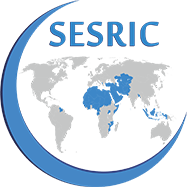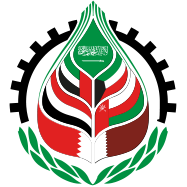Solution session on: "Digital Pathways to Formalization in the Social and Solidarity Economy"
جلسة حلول حول: "المسارات الرقمية نحو إضفاء الطابع المنظم في الاقتصاد الاجتماعي والتضامني"
Background
Informal Employment, the Social and Solidarity Economy, and digital transformation
The majority of workers around the world (over two billion workers, or 58% of the global labor force) are informally employed. Vulnerable populations living in developing countries: women, youth, persons with disabilities, and migrants, are the most likely to be in informal employment. A lack of job security and social protection, combined with precarious working conditions and low, irregular, earnings, exacerbates these vulnerabilities perpetuating cycles of inequality.
The challenges associated with informal employment are not new. However, as populations grow and economies fail to create formal jobs at the pace that workers enter the labor force, innovative and inclusive approaches are urgently required.
The social and solidarity economy (SSE) is a grassroots movement that empowers communities and addresses the inequalities affecting marginalized groups. It aims to reduce the vulnerability of informal workers by organizing workers into cooperatives, formalizing some enterprises, and expanding access to community-led social protection schemes. While the SSE does not replace government-led universal social protection, it can act as a bridge towards a more inclusive society.
Technology and digital transformation are powerful tools that can accelerate the benefits of the social and solidarity economy and the inclusion of vulnerable populations, including persons with disabilities (PWD).
Digital registries can increase the visibility of previously unseen informal workers. E-commerce platforms and digital cooperatives can expand market access, support certification, and boost profitability. Enhanced access to digital financial services can enable community investment in profitable ventures, offer insurance against shocks, and support inclusion into contributory social insurance programmes. Online training programmes can improve the efficiency and profitability of cooperatives and SMEs. And when apps or platforms are made in an accessible format, they can reduce travelling distances for persons with mobility impairments, or can foster the inclusion of previously excluded persons with audio, visual, or intellectual disabilities.
However, embracing accessible digital transformation within the social and solidarity economy will not automatically translate into formal employment creation or the inclusion of persons with disabilities. While digital transformation can increase profitability and skills, formalization requires both time and deliberate incentives. Including previously excluded populations, such as persons with disabilities, also requires additional outreach efforts that build awareness of new digital platforms and understanding of how best to utilize them. A digitalized social and solidarity economy must therefore be complemented by a supportive policy environment that makes formalization an attractive option and that specifically targets the most vulnerable populations.
Where are we today?
In Arab and Islamic countries, informal employment ranges approximately from 37% of the labor force to 94%. This figure is not available for persons with disabilities, as the general condition of persons with disabilities in some societies is invisibility.
Nonetheless, many successful examples show how digital transformation can support the social and solidarity economy, and encourage greater inclusion and formalization such as:
Adopting Laws on the Social and Solidarity Economy. Can promote the co-existence of public, private and social economy institutions, and foster the economic and social inclusion of disadvantaged populations by encouraging them to associate in cooperatives, mutual organizations or self-help groups. A number of initiatives have been launched to support the implementation of these laws, to strengthen SSE entities, create decent jobs for young people, women and persons with disabilities in disadvantaged areas and support the transition to the formal economy such as JEUN’ESS.
As for digital accessibility, DOST Agency is a one-stop shop that collects all government social services together in one accessible platform. It ensures persons with disabilities can access all government services online, automatically identifies citizens entitlement for social services and payments (thereby eliminating complex requests), and offers opportunities such as capacity building and knowledge training for the unemployed, and specifically for persons with disabilities.
These are examples of many other solutions which can be scaled up and adapted to address the plight of informal workers in the region.
خلفية
العمالة غير المنظمة، والاقتصاد الاجتماعي والتضامني، والتحول الرقمي
يشكل العاملون في الاقتصاد غير المنظم أكثر من ملياري شخص، أي ما يعادل 58% من القوى العاملة على مستوى العالم. وتُعد الفئات الهشّة في البلدان النامية — ولا سيّما النساء والشباب والأشخاص ذوو الإعاقة والعمال المهاجرون — الأكثر احتمالاً للانخراط في هذا النمط من العمل. ويسهم انعدام الأمن الوظيفي والحماية الاجتماعية، إلى جانب عدم استقرار شروط العمل وتدنّي الأجور وعدم انتظامها، في تفاقم هذه الهشاشة واستدامة دوّامة اللامساواة.
وعلى الرغم من أن التحديات المرتبطة بالعمالة غير المنظَّمة ليست جديدة، إلا أن نموّ السكان وإخفاق الاقتصادات في خلق وظائف ذات طابع منظم بالوتيرة ذاتها التي ينضمّ بها الداخلون الجدد إلى سوق العمل، تُبرز الحاجة الملحة إلى وجود مقاربات مبتكَرة وشاملة.
وفي هذا السياق يأتي دور الاقتصاد الاجتماعي والتضامني باعتباره حركة مجتمعية تنطلق من القاعدة الشعبية، تمكّن المجتمعات وتعالج أوجه اللامساواة الـتي تؤثر في الفئات المهمَّشة. ويهدف هذا الاقتصاد إلى تقليص هشاشة العاملين غـير المنظَّمين من خلال تنظيمهم في تعاونيات، وإضفاء الطابع المنظَّم على بعض المؤسسات، وتوسيع نطاق الوصول إلى نظم الحماية الاجتماعية التي تقودها المجتمعات. وعلى الرغم من أنّ الاقتصاد الاجتماعي والتضامني ليس بديلاً عن نظم الحماية الاجتماعية الشاملة التي توفرها الحكومات، فإنه يمكن أن يشكّل جسراً نحو مجتمع أكثر شمولاً.
وتعد التكنولوجيا والتحول الرقمي من الأدوات القوية التي يمكن أن تُسرِّع الاستفادة من الاقتصاد الاجتماعي والتضامني وإدماج الفئات الهشّة، بما في ذلك الأشخاص ذوو الإعاقة. فمن خلال السجلات الرقمية يمكن إلقاء الضوء على العاملين في الاقتصاد غير المنظَّم الذين كانوا خارج نطاق الرصد سابقاً. كما تتيح منصّات التجارة الإلكترونية والتعاونيات الرقمية توسيع الوصول إلى الأسواق، ودعم إصدار الشهادات والتصديقات، وزيادة الربحية. ويسهم تحسين الوصول إلى الخدمات المالية الرقمية في تمكين المجتمعات من الاستثمار في مشاريع مُجدية، ويوفر تغطية تأمينية ضد الصدمات، ويدعم الإدماج في برامج التأمين الاجتماعي القائمة على المساهمات. ويمكن لبرامج التدريب عبر الإنترنت أن تعزّز ربحية التعاونيات والمؤسسات الصغيرة والمتوسطة. وعندما تُصمَّم التطبيقات والمنصّات بصيغ مبسطة ميسرة الاستخدام، فإنها تقلّل أعباء التنقّل على الأشخاص ذوي الإعاقة الحركية، وتدعم إدماج الأشخاص ذوي الإعاقات السمعية أو البصرية أو الذهنية ممّن تعرّضوا سابقاً للإقصاء.
مع ذلك، فإن اعتماد تحول رقمي يسهُل الوصول إليه في إطار الاقتصاد الاجتماعي والتضامني لن يترجم تلقائياً إلى خلق فرص عمل في الاقتصاد المنظَّم أو إلى إدماج الأشخاص ذوي الإعاقة. فعلى الرغم من أنّ التحوّل الرقمي يمكن أن يزيد الربحية ويرفع المهارات، فإن الانتقال إلى الاقتصاد المنظَّم يتطلب وقتاً وحوافز مدروسة بعناية. كما أنّ إدماج الفئات التي كانت مُستبعَدة سابقاً، مثل الأشخاص ذوي الإعاقة، يحتاج إلى جهود توعوية إضافية لتعزيز الوعي بالمنصّات الرقمية الجديدة وتحسين فهم سُبُل استخدامها. ومن ثم، ينبغي استكمال الاقتصاد الاجتماعي والتضامني الرقمي ببيئة سياسات داعمة تجعل الانخراط في الاقتصاد المنظم خياراً جذّاباً، مع استهداف الفئات الأكثر هشاشة على نحو محدّد.
أين نحن اليوم؟
تتراوح نسبة العمالة غير المنظَّمة في الدول العربية والإسلامية بين 37% و 94% من القوى العاملة. ولا تتوافر بيانات عن الأشخاص ذوي الإعاقة، إذ الوضع العام للأشخاص ذوي الإعاقة في بعض المجتمعات هو التغييب في الإحصاءات.
ومع ذلك، تظهر العديد من الأمثلة الناجحة كيف يمكن للتحول الرقمي دعم الاقتصاد الاجتماعي والتضامني، ويشجّع على قدر أكبر من الشمول وإضفاء الطابع المنظم.
على سبيل المثال، يسهم اعتماد أطر تشريعية للاقتصاد الاجتماعي والتضامني في تعزيز التكامل بين مؤسسات القطاعين العام والخاص ومؤسسات الاقتصاد الاجتماعي، وفي دعم الإدماج الاقتصادي والاجتماعي للفئات المحرومة من خلال تشجيعها على الانضمام إلى التعاونيات أوالتعاضديات أومجموعات المساعدة الذاتية. وقد أُطلقت عدة مبادرات لدعم تنفيذ هذه القوانين، ارست إطارًا وطنيًا لتعزيز كيانات الاقتصاد الإجتماعي و التضامني وخلقِ وظائف لائقة للشباب، والنساء، والأشخاص ذوي الإعاقة في المناطق المحرومة، ودعمِ الانتقال إلى الاقتصاد المنظم، منها مشروع JEUN’ESS..
و فيما يخصّ الشمول الرقمي وإتاحة الوصول، تُعد مبادرة DOST منصة متكاملة تجمع الخدمات الاجتماعية الحكومية في نافذة واحدة ميسرة الوصول والاستخدام، وتمكّن الأشخاص ذوي الإعاقة من النفاذ إلى الخدمات الحكومية عبر الإنترنت، وتحدّد تلقائياً استحقاقات المواطنين للمدفوعات والخدمات الاجتماعية، ما يحدّ من الحاجة إلى طلبات معقدة. كما توفّر فرصاً لبناء القدرات والتدريب المعرفي للعاطلين عن العمل، ولا سيّما الأشخاص ذوي الإعاقة.
هذه أمثلة لحلول من بين أمثلة كثيرة، ويمكن توسيع نطاقها وتكييفها لمعالجة أوضاع العمالة غير المنظمة في المنطقة.
What we aim to achieve
- Showcase inclusion through technology – Demonstrate how global technological change and digital transformation within the Social and Solidarity Economy (SSE) can enhance people’s daily lives.
- Policy and expertise exchange – Engage policymakers and experts to align SSE, digital transformation, and social inclusion for advancing formal employment opportunities.
- Define enabling environments – Explore and outline the policy frameworks needed to unlock the full potential of a digital SSE.
- Foster commitment and dialogue – Convene experts, and policymakers to commit to solutions and discuss adapting successful models across member states and globally.
ما نهدف إلى تحقيقه
- تعزيز الشمول من خلال التكنولوجيا: توضيح الكيفية التي يمكن بها للتغير التكنولوجي العالمي والتحول الرقمي ضمن إطار الاقتصاد الاجتماعي والتضامني أن يساهم في تحسين جودة الحياة اليومية للأفراد.
- تبادل السياسات والخبرات: إشراك واضعي السياسات والخبراء بهدف مواءمة مسارات الاقتصاد الاجتماعي والتضامني والتحول الرقمي والشمول الاجتماعي، بما يعزز فرص العمل اللائق والمنظم.
- تحديد البيئة التمكينية: استكشاف وبيان الأطر والسياسات اللازمة لإطلاق الإمكانات الكاملة للاقتصاد الاجتماعي والتضامني الرقمي.
- تعزيز الالتزام والحوار: جمع الخبراء وصانعي السياسات لتعزيز الالتزام بإيجاد حلول عملية، ومناقشة سبل تكييف النماذج الناجحة على مستوى الدول الأعضاء وعلى المستوى العالمي.
A policy framework, robust partnerships and digital inclusion
- Commitment to a global/regional policy framework that leverages a digital social and solidarity economy to achieve greater worker formalization.
- Creation of practical international and regional partnerships for exchanging expertise and scaling up digital solidarity solutions aimed at empowering vulnerable groups.
- Greater commitment, and knowledge of how to achieve worker formalization at the enterprise level.
- Greater commitment to support worker formalization at the policy level, including the development of digital registries for informal workers and flexible contributory social insurance schemes.
- Promotion of digital inclusion for marginalized groups, including persons with disabilities, and adoption of digital accessibility standards like WCAG across Arab and OIC countries.
إطار سياساتي وشراكات فاعلة وشمول رقمي
- الالتزام بإطار سياسات عالمي/إقليمي يعزز الاقتصاد الاجتماعي والتضامني الرقمي لإضفاء المزيد من الطابع المنظم على العمالة.
- بناء شراكات عملية دولية وإقليمية لتبادل الخبرات وتوسيع نطاق حلول التضامن الرقمي الهادفة إلى تمكين الفئات الهشة.
- تعزيز الالتزام والمعرفة بكيفية إضفاء الطابع المنظم للعمال على المستوى المؤسسي.
- التزام أكبر بدعم دمج العمالة في الاقتصاد المنظم على مستوى السياسات، بما في ذلك تطوير سجلات رقمية للعمال في الاقتصاد غير المنظم وأنظمة مرنة للتأمين الاجتماعي قائمة على المساهمة.
- تعزيز الشمول الرقمي للفئات المهمشة، بما في ذلك الأشخاص ذوي الإعاقة، وتبني معايير إمكانية الوصول الرقمي مثل إرشادات الوصول إلى محتوى الويب (WCAG) في الدول العربية ودول منظمة التعاون الإسلامي.
Where & When
- Room 10
- 4 November 2025
- 15:00 - 16:15
أين ومتى
- القاعة 10
- 4 نوفمبر 2025
- 15:00 - 16:15
Session partners
شركاء الجلسة




Reserve a seat
A confirmation email will be sent upon successful submission.
احجز مقعدك
سيتم إرسال بريد إلكتروني للتأكيد عند نجاح التسجيل.